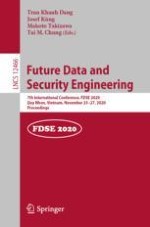2020 | OriginalPaper | Buchkapitel
Malicious-Traffic Classification Using Deep Learning with Packet Bytes and Arrival Time
verfasst von : Ingyom Kim, Tai-Myoung Chung
Erschienen in: Future Data and Security Engineering
Aktivieren Sie unsere intelligente Suche, um passende Fachinhalte oder Patente zu finden.
Wählen Sie Textabschnitte aus um mit Künstlicher Intelligenz passenden Patente zu finden. powered by
Markieren Sie Textabschnitte, um KI-gestützt weitere passende Inhalte zu finden. powered by
